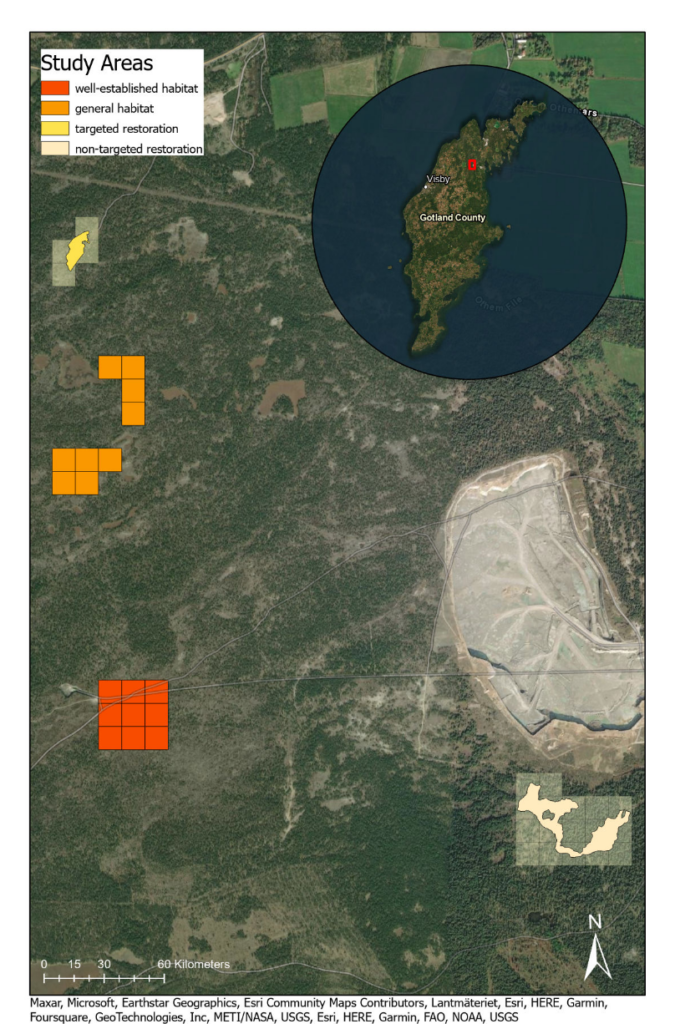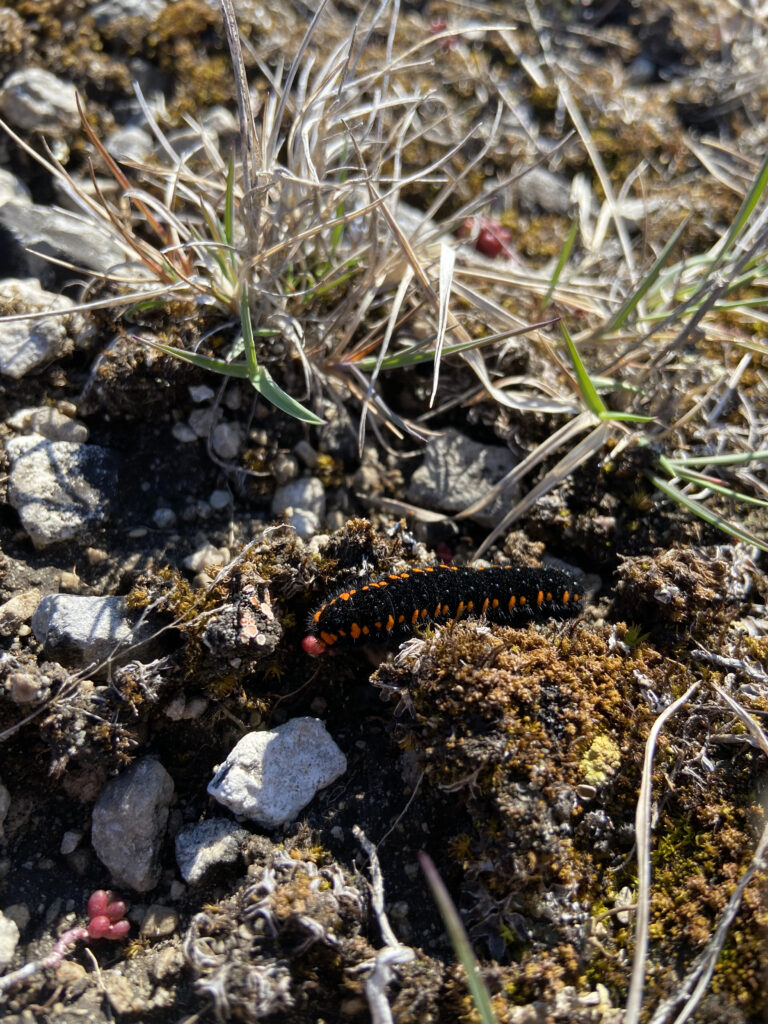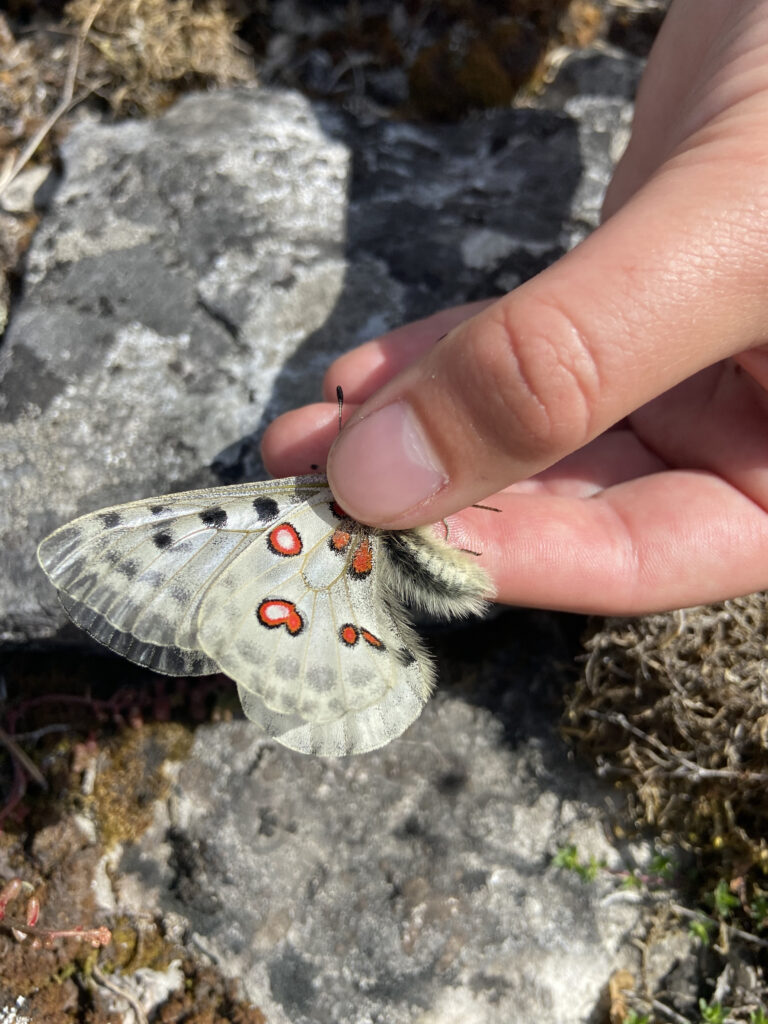Study area:

My study area was located on the Swedish island of Gotland in the Baltic Sea, where it is characterised by a unique environment, the “alvar”. Alvars have a very limited distribution as they occur on limestone plains. This results in calcareous grasslands on very thin soils and a large diversity of specialised species.
In this study area four study sites were chosen near the locality of Slite. Two of the four study sites, each nine hectares, serve as reference areas. One is a well-established Apollo butterfly habitat with the highest butterfly numbers observed in the area. The other is a general habitat where Apollo numbers have been intermediate compared to the established habitat’s hotspot in previous years.
The other two study sites are differently targeted restorations with the goal to create new Apollo habitats. The first restoration was carried out in 2020 and the resulting new area covers 0.85 ha of targeted restoration. This area was purposefully created to provide new habitat for the Apollo. The second restoration was carried out in 2021 and covers 4.4 ha. This was a non-targeted restoration intended to provide habitat for both the Large Blue (Phengaris arion) and Apollo butterfly but focused primarily on the Large Blue.
Field methods:
Data on larvae density was collected in a transect survey in the reference areas and area-wide surveys in the restored areas in mid-May this year. This method was used to allow better comparison of density data between years, as the same methods were used in previous seasons in these areas in 2020 and 2021.
We conducted area-wide surveys to collect data on the small-scale habitat preferences of larva. After detection, we took GPS positions and measured habitat characteristics within 2-meter radius plots surrounding the larva. We recorded the cover of host plants, moss, lichen, grass, bare rock, bare soil, and other plants in each plot. We also recorded the same parameters in 10 to 15 randomly placed control plots per grid.

Data on imago denisty was collected in a hectare grid survey in all four study areas from late June to mid-July. Butterflies were recorded in the suitable habitat of each grid cell by visualizing a 5×5 m cube while walking and noting each individual Apollo butterfly with a GPS coordinate in full area surveys. If the butterfly was observed feeding, the host plant was also noted. Imago data from 2019 and 2020 was used from earlier mark-recapture studies (CMR), data from 2021 was obtained during the same grid inventory process as described above.
We also conducted nectar surveys as part of the large-scale habitat preference study. For this purpose, five quadrants of 10 x10 m per hectare grid cell were laid out to cover the area as completely as possible. Within each quadrant, every flowering plant species was identified to species level if possible. In addition, all flowering heads of the identified flowers were counted to estimate the abundance of nectar flowers per hectare of the grid cell. In addition data on open land, tree, and bush cover, as well as ground moisture (GMI), was gathered using a 10 x10 m scale for the study sites (National landcover data).
